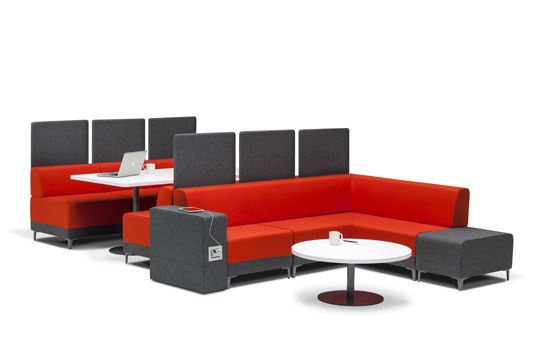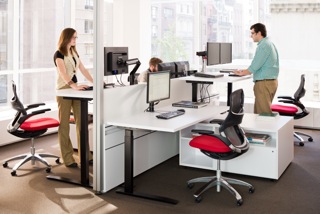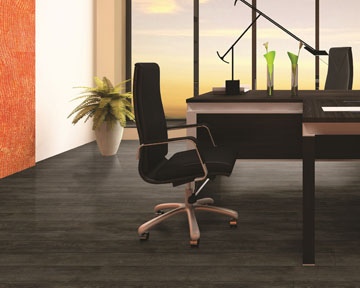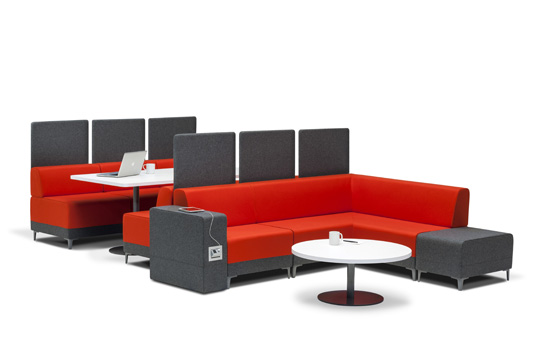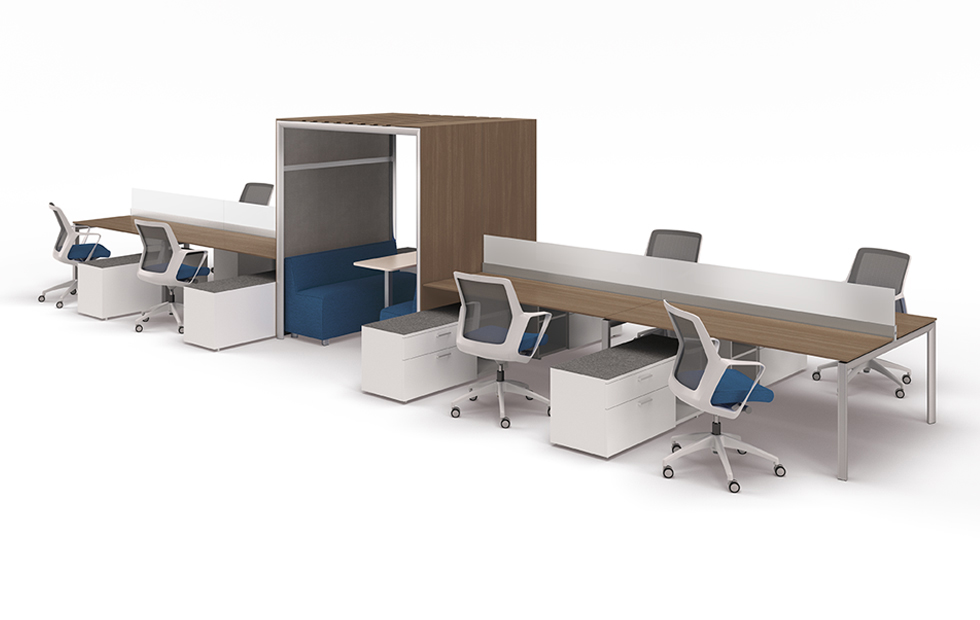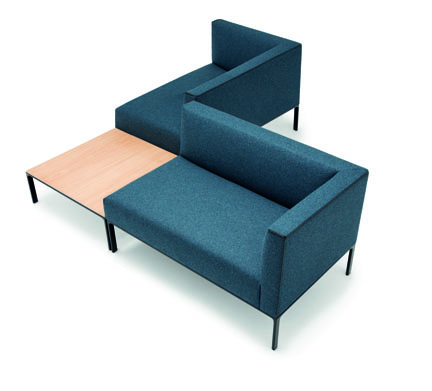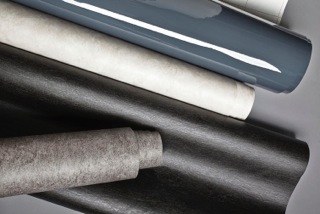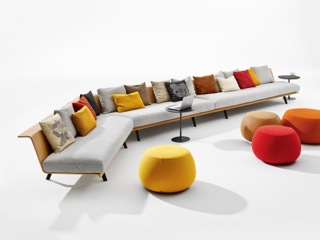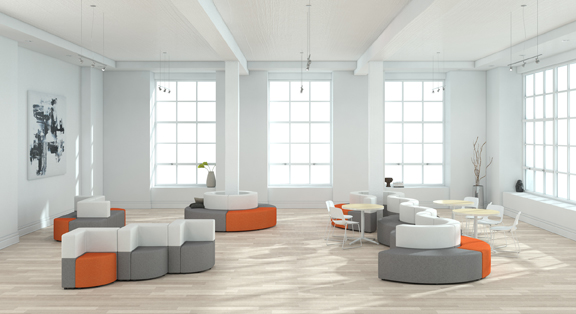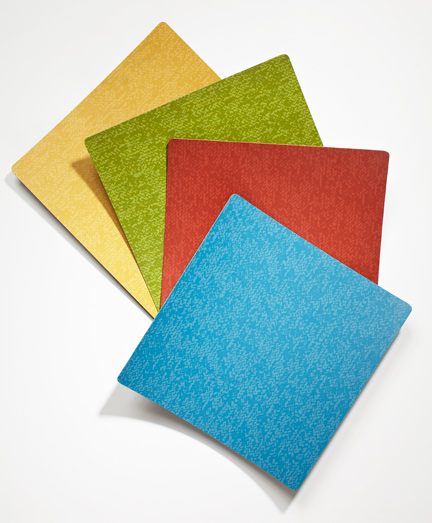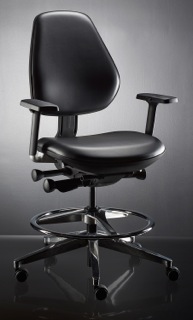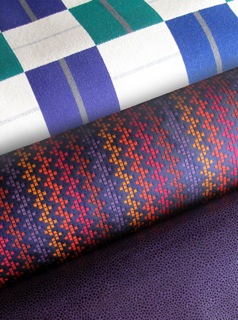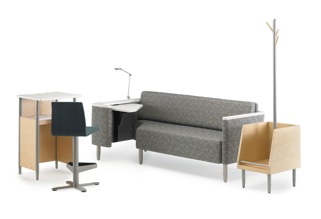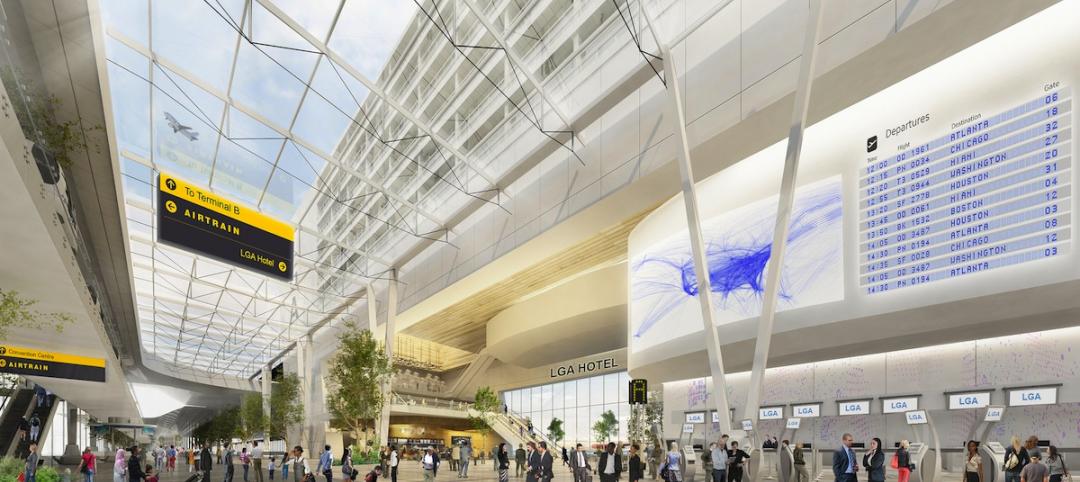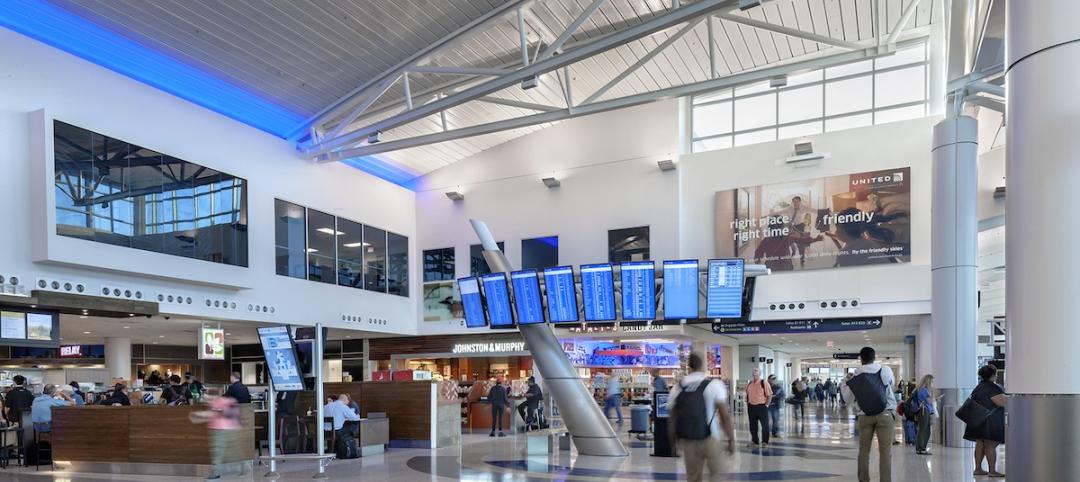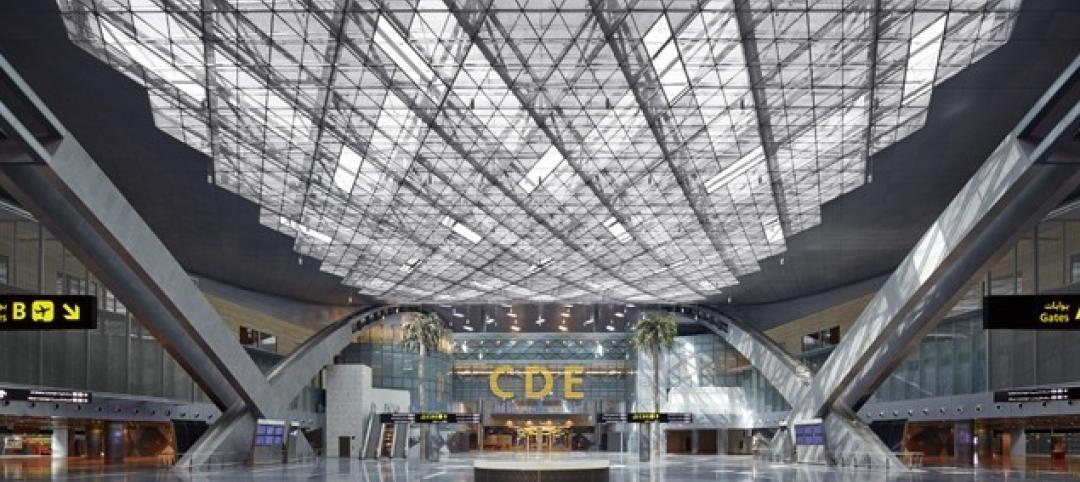In order to set the stage for this year’s NeoCon, show management tapped its advisory committee of top commercial design firms to share their insight on what’s hot right now and what lies ahead across key vertical sectors.
Leaders at Gensler, FXFOWLE, HOK, and Mancini Duffy weighed in on trends and corresponding product picks. Here are their top interior design trends:
Office/Corporate Design
Health & Wellness and Technology Are Key Features in the Office
“Finally, Baby Boomers and Millennials have found a passionate meeting of the minds on a topic that is also very personal: health and wellness,” says Workplace Strategist Priyanka Agrawala of New York-based design firm Mancini Duffy. “Convergence on this topic is also perhaps why organizations trying to attract new talent, retain experienced staff, encourage knowledge transfer, and increase productivity and engagement, think that investing in this area is a no-brainer.
The A&D industry is gearing up to help support this new business initiative, which also aligns with more established sustainable design practices. Green design and LEED principles have always passively contributed to wellness by creating good indoor air quality. Now we’re seeing circadian lighting; sit-stand desks; ergonomic lounge seating that also accommodates mobile technology; biophillic design elements like “live walls” and plants and gardens that bring the outdoors inside added to the mix, in addition to more active design concepts."
Active design principles that promote wellness include diverse work settings that not only support different work styles, but also encourage people to get up from their seats and move. As mobility within the office increases, so does the demand for 'plug and play' solutions that include collaborative spaces as well as individual desks and seating with built-in charging stations, stashable storage for technology, foldable tablet arms and side tables, and mobile marker/technology boards.”
Sarah Gerber, Senior Designer, Associate, FXFOWLE, elaborates on the changing corporate design landscape, noting, “Technology is having an enormous impact on furniture design, especially through ergonomics. The trend is not necessarily about incorporating technology, but responding to how we position ourselves when we use these technologies.
In addition, the ‘performative’ workplace is becoming a balanced workplace as organizations seek to find the right proportion of interactive and focused work. The future of the workplace is not a “one size fits all” approach; rather, it’s an innovative response to the growing amount of data at our disposal.”
Hospitality
Moving Toward More Flexible & Authentic Experiences
“Authenticity is fast becoming another overarching trend for all demographics," adds Monk. “Consistency in appearance and experience used to be the most important quality for hotel chains to convey. The idea was that wherever you went, a name brand looked and felt the same so guests could take comfort in the familiar.
These days, with technology and the Internet giving us access to an array of information, imagery and virtual experiences, travelers want to authentically experience the culture of the locale in which they are staying. Firms have responded to this desire by focusing on brand and property distinction while creating more unique experiences and products that tap into local flavors.”
Healthcare
Healthcare Sector Reacts To New Health Laws In Project & Product Design
Tama Duffy Day, Health & Wellness Director of Gensler, remarks, “As eight million new Affordable Care Act (ACA) enrollees have access to healthcare, the industry is responding by providing expanded and new ways of receiving care. Health systems are increasing their coverage and new players are moving the industry toward retail health.
Designers are shaping these clinical experiences in every way—from brand recognition and consumer-driven first-impression appeal, to efficient clinical floor plans in support of increasing the patient and provider interactions. Given this significant and fast-moving change in the industry, products need to keep up with the demand—for example, mobile small-scale technology carts, exam tables that can also be a chair, technology integrated into white boards, and spaces that can be used for telemedicine.”
With the Affordable Care Act placing more emphasis on the effectiveness of patient care and experience, the traditional model of hospital design is being rethought and reimagined by healthcare designers across the board—from architects and interior designers to product and equipment designers, and service and UX designers.
This renewed focus on human-centric outcomes for end users—the patients and their individual needs as well as the healthcare professionals that work in these environments every day—is bringing about a shift in scale from large-umbrella hospital campuses that house every type of care, to individual clinics and ambulatory care facilities.
Meanwhile, patient surveys indicate the desire for medical environments that are less sterile and “clinical” and more like a home. Designers are responding with solutions to improve experiential and usability factors for patients and their caregivers. These include decreasing noise and increasing privacy, providing more natural light, improving the accessibility, movement and ergonomics of furniture and equipment, enabling multitasking, and creating surfaces that are easier to clean.
Related Stories
Airports | Jul 28, 2015
Plans to make over New York’s aging LaGuardia Airport are revealed
The complete redesign, devised by a panel of experts, would unify terminals, relieve ground traffic congestion, and install state-of-the-art amenities.
Airports | Jul 22, 2015
MUST SEE: JFK airport taps Gensler to design terminal for animals
Pets can enjoy luxurious spa and grooming services before being transported directly to their flight from the terminal.
Airports | Jul 1, 2015
FIRST LOOK: JetBlue opens sprawling green rooftop at JFK International Airport
The 4,046-sf rooftop includes landscaped green spaces, seating for 50 people, 400-sf children’s play area, and a 400-sf dog-walk area.
Sponsored | Airports | Jun 5, 2015
Exposed glulam framework offers quiet complement to Jackson Hole airport’s mountain backdrop
A three-phase expansion and renovation, which began in 2009, nearly doubled the size of the aviation hub; the only one located in a national park
Airports | Apr 21, 2015
Trends driving airport construction
Upgrades to aviation infrastructure have not kept pace with the increase in airport traffic or even at a level sufficient to accommodate the life cycle of our many dated terminal facilities. Until now.
Airports | Feb 6, 2015
Zaha Hadid-designed terminal in Beijing will be world’s largest
The terminal will accommodate 45 million passengers per year, and will be a hub for both air and rail travel.
| Jan 2, 2015
Construction put in place enjoyed healthy gains in 2014
Construction consultant FMI foresees—with some caveats—continuing growth in the office, lodging, and manufacturing sectors. But funding uncertainties raise red flags in education and healthcare.
BIM and Information Technology | Dec 28, 2014
The Big Data revolution: How data-driven design is transforming project planning
There are literally hundreds of applications for deep analytics in planning and design projects, not to mention the many benefits for construction teams, building owners, and facility managers. We profile some early successful applications.
| Dec 28, 2014
AIA course: Enhancing interior comfort while improving overall building efficacy
Providing more comfortable conditions to building occupants has become a top priority in today’s interior designs. This course is worth 1.0 AIA LU/HSW.
| Dec 28, 2014
The future of airport terminal design: destination status, five-star amenities, stress-free travel
Taking a cue from the hospitality industry, airport executives are seeking to make their facilities feel more like destinations, writes HOK's Richard Gammon.


